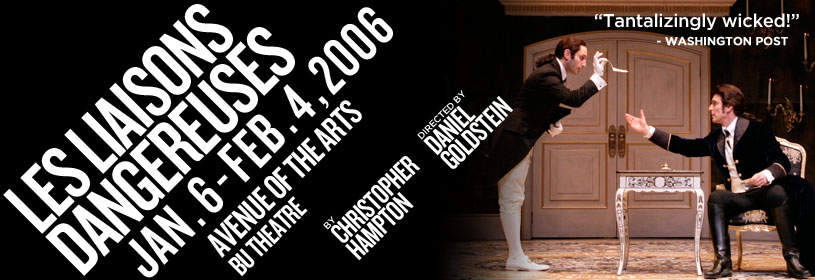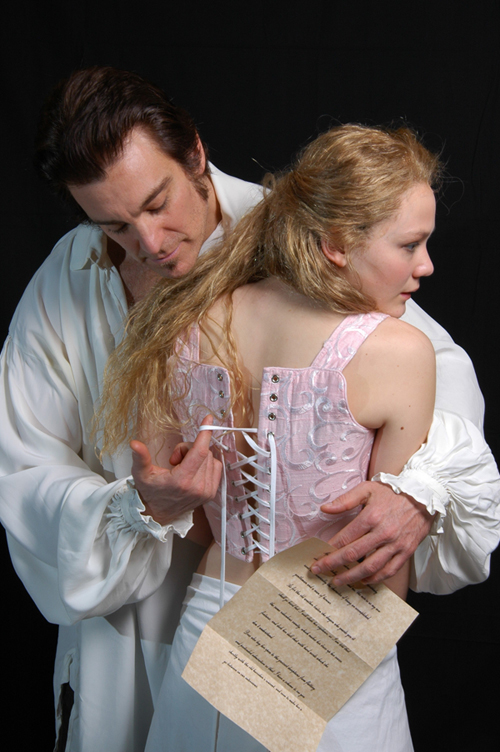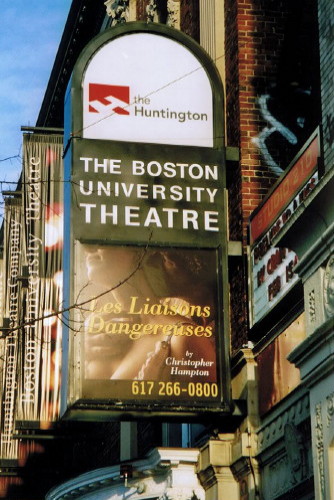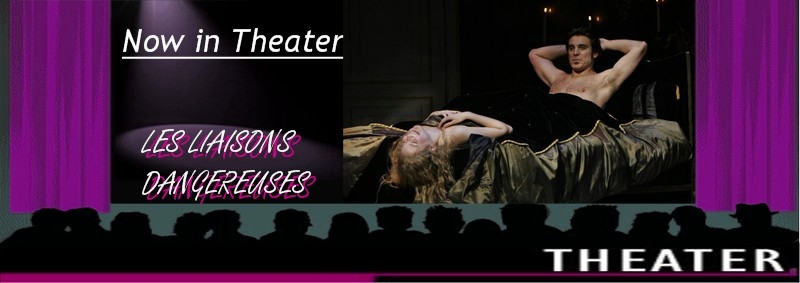
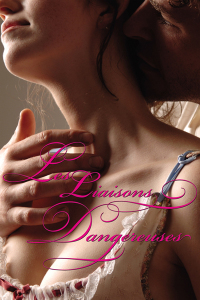
|
|
||||||
SEXY, SEDUCTIVE LES LIAISONS DANGEREUSES HEATS UP THE HUNTINGTON STAGE
Acclaimed Falsettos director Daniel Goldstein helms a stylish take on love, lust, and cruel betrayal in 18th century Paris.
Games of love and lust in 18th century Paris play out on a stunningly stylized, mirrored stage as the Huntington Theatre Company presents Christopher Hampton’s award-winning play “Les Liaisons Dangereuses” from Jan. 6 to Feb. 5, 2006 at the Boston University (B.U.) Theatre, 264 Huntington Avenue, Boston.
In this seductive and fiercely witty drama, the beautiful and cunning La Marquise de Merteuil (played by Tasha Lawrence) enlists her partner-in-crime Le Vicomte de Valmont, (TV and movie star Michael T. Weiss), to seduce her former lover’s bride-to-be in this adaptation of the original novel by Choderlos de Laclos.
In addition to this play, Laclos’ scandalous story inspired numerous Hollywood re-tellings. The films Dangerous Liaisons (1988, with John Malkovich and Glenn Close), Valmont (1989, with Colin Firth and Annette Benning), and Cruel Intentions (1999, with Reese Witherspoon and Ryan Phillippe), featured versions of the original story that snakes in and out of Parisian bedrooms and salons in the 1780s.
Director Daniel Goldstein has opted for a stylish, non-classical approach to what he calls “a massive production.” The multi-layered set, designed by Drama Desk Award-winner James Noone, is a dizzying array of mirrors, staircases, and spirals that Goldstein describes as “a cyclone swirling around Valmont that makes the play move like lightning.” Goldstein says the costumes, by newcomer Erin Chainani, are inspired by contemporary fashion “with the silhouette of period clothes, but not the traditional fabrics. Some of Valmont’s clothes in this show are inspired by Karl Lagerfeld’s personal style. And one of Madame de Volanges’ gowns is an 18th Century version of Hillary Clinton’s inaugural dress.” An original score, created by composer Loren Toolajian is inspired by a modern jazz harpsichord composition. “Loren broke the rules for period music…the score has a pounding, pulsing feel to it,” Goldstein says.
